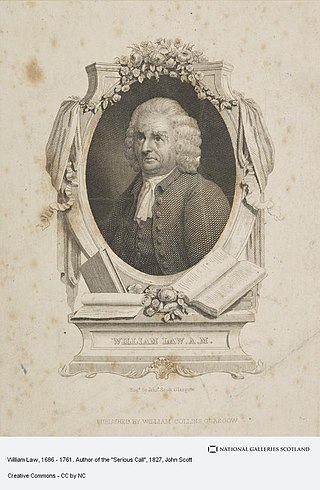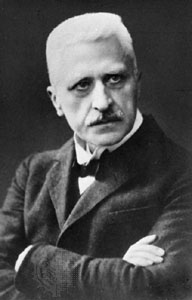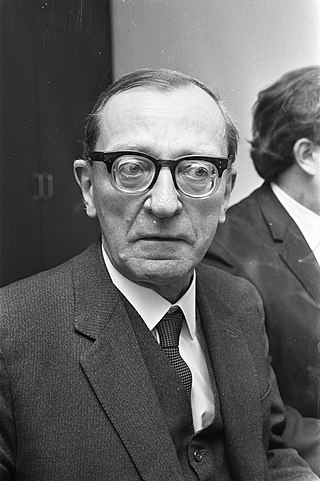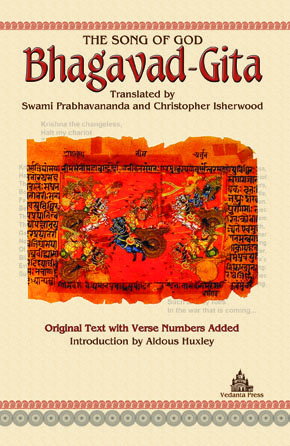
Aldous Leonard Huxley was an English writer and philosopher. His bibliography spans nearly 50 books, including novels and non-fiction works, as well as essays, narratives, and poems.
Agnosticism is the view or belief that the existence of God, of the divine or the supernatural is unknown or unknowable. It can be categorized as an indifference or absence of firm beliefs in theistic religions and atheism on that basis. Another definition provided is the view that "human reason is incapable of providing sufficient rational grounds to justify either the belief that God exists or the belief that God does not exist."

The Doors of Perception is an autobiographical book written by Aldous Huxley. Published in 1954, it elaborates on his psychedelic experience under the influence of mescaline in May 1953. Huxley recalls the insights he experienced, ranging from the "purely aesthetic" to "sacramental vision", and reflects on their philosophical and psychological implications. In 1956, he published Heaven and Hell, another essay which elaborates these reflections further. The two works have since often been published together as one book; the title of both comes from William Blake's 1793 book The Marriage of Heaven and Hell.

Brave New World is a dystopian novel by English author Aldous Huxley, written in 1931 and published in 1932. Largely set in a futuristic World State, whose citizens are environmentally engineered into an intelligence-based social hierarchy, the novel anticipates huge scientific advancements in reproductive technology, sleep-learning, psychological manipulation and classical conditioning that are combined to make a dystopian society which is challenged by the story's protagonist. Huxley followed this book with a reassessment in essay form, Brave New World Revisited (1958), and with his final novel, Island (1962), the utopian counterpart. This novel is often compared to George Orwell's 1984 (1949).
The perennial philosophy, also referred to as perennialism and perennial wisdom, is a perspective in philosophy and spirituality that views religious traditions as sharing a single, metaphysical truth or origin from which all esoteric and exoteric knowledge and doctrine has grown.

William Ralph Inge was an English author, Anglican priest, professor of divinity at Cambridge, and dean of St Paul's Cathedral, which provided the appellation by which he was widely known, Dean Inge. He was nominated for the Nobel Prize in Literature three times.

William Law was a Church of England priest who lost his position at Emmanuel College, Cambridge when his conscience would not allow him to take the required oath of allegiance to the first Hanoverian monarch, King George I. Previously, William Law had given his allegiance to the House of Stuart and is sometimes considered a second-generation non-juror. Thereafter, Law continued as a simple priest (curate) and when that too became impossible without the required oath, Law taught privately and wrote extensively. His personal integrity, as well as his mystic and theological writing greatly influenced the evangelical movement of his day, as well as Enlightenment thinkers such as the writer Dr. Samuel Johnson and the historian Edward Gibbon. In 1784, William Wilberforce (1759–1833), the politician, philanthropist, and leader of the movement to stop the slave trade, was deeply touched by reading William Law's book A Serious Call to a Devout and Holy Life (1729). Law's spiritual writings remain in print today.

Rudolf Otto was an eminent German Lutheran theologian, philosopher, and comparative religionist. He is regarded as one of the most influential scholars of religion in the early twentieth century and is best known for his concept of the numinous, a profound emotional experience he argued was at the heart of the world's religions. While his work started in the domain of liberal Christian theology, its main thrust was always apologetical, seeking to defend religion against naturalist critiques. Otto eventually came to conceive of his work as part of a science of religion, which was divided into the philosophy of religion, the history of religion, and the psychology of religion.

Christian mysticism is the tradition of mystical practices and mystical theology within Christianity which "concerns the preparation [of the person] for, the consciousness of, and the effect of [...] a direct and transformative presence of God" or Divine love. Until the sixth century the practice of what is now called mysticism was referred to by the term contemplatio, c.q. theoria, from contemplatio, "looking at", "gazing at", "being aware of" God or the Divine. Christianity took up the use of both the Greek (theoria) and Latin terminology to describe various forms of prayer and the process of coming to know God.

Swami Prabhavananda was an Indian philosopher, monk of the Ramakrishna Order, and religious teacher. He moved to America in 1923 to take up the role of assistant minister in the San Francisco Vedanta Society. In 1928 he was the minister of a small group in Portland, OR, but in 1930 he founded the Vedanta Society of Southern California. The Swami spent the rest of his life there, writing and collaborating with some of the most distinguished authors and intellectuals of the time, including Aldous Huxley, Christopher Isherwood, and Gerald Heard.

Huston Cummings Smith was a scholar of religious studies in the United States, He authored at least thirteen books on world's religions and philosophy, and his book about comparative religion, The World's Religions sold over three million copies as of 2017.

Robert Charles Zaehner was a British academic whose field of study was Eastern religions. He understood the original language of many sacred texts, e.g., Hindu (Sanskrit), Buddhist (Pali), Islamic (Arabic). At Oxford University his first writings were on the Zoroastrian religion and its texts. Starting in World War II, he had served as an intelligence officer in Iran. Appointed Spalding Professor at Oxford in 1952, his books addressed such subjects as mystical experience, Hinduism, comparative religion, Christianity and other religions, and ethics. He translated the Bhagavad-Gita, providing an extensive commentary based on Hindu tradition and sources. His last books addressed similar issues in popular culture, which led to his talks on the BBC. He published under the name R. C. Zaehner.
Scholarly approaches to mysticism include typologies of mysticism and the explanation of mystical states. Since the 19th century, mystical experience has evolved as a distinctive concept. It is closely related to "mysticism" but lays sole emphasis on the experiential aspect, be it spontaneous or induced by human behavior, whereas mysticism encompasses a broad range of practices aiming at a transformation of the person, not just inducing mystical experiences.

The Gospel of Sri Ramakrishna is an English translation of the Bengali religious text Sri Sri Ramakrishna Kathamrita by Swami Nikhilananda. The text records conversations of Ramakrishna with his disciples, devotees and visitors, recorded by Mahendranath Gupta, who wrote the book under the pseudonym of "M." The first edition was published in 1942.

Dana Sawyer is a full-time professor of religion and philosophy at the Maine College of Art & Design and an adjunct professor in Asian Religions at the Chaplaincy Institute of Maine. He is the author of numerous published papers and books, including Aldous Huxley: A Biography, which Laura Huxley described as, "Out of all the biographies written about Aldous, this is the only one he would have actually liked." In 2014, Sawyer's authorized biography of Huston Smith was published.
Vedanta Press is the publishing wing of the Vedanta Society of Southern California, founded in 1930 by Swami Prabhavananda. It publishes a number of important books in Indian philosophy and the Vedanta tradition, both original works and translations of Sanskrit scriptures. Vedanta Press published collaborations, original articles, and books by leading intellectuals of the 1940s to the present, including Aldous Huxley, Christopher Isherwood, Fredrick Manchester, among others.

Mysticism is popularly known as becoming one with God or the Absolute, but may refer to any kind of ecstasy or altered state of consciousness which is given a religious or spiritual meaning. It may also refer to the attainment of insight in ultimate or hidden truths, and to human transformation supported by various practices and experiences.

Time and Eternity - An Essay on the Philosophy of Religion is a philosophy book written by Walter Terence Stace. At the time of writing, Stace was a professor of philosophy at Princeton University, where he had worked since 1932 after a 22-year career in the Ceylon Civil Service. Time and Eternity was one of his first books about the philosophy of religion and mysticism, after writing throughout most of the 1930s and 1940s that was influenced by phenomenalist philosophy.

The following bibliography of Aldous Huxley provides a chronological list of the published works of English writer Aldous Huxley (1894–1963). It includes his fiction and non-fiction, both published during his lifetime and posthumously.

Bhagavad Gita - The Song of God is the title of the Swami Prabhavananda and Christopher Isherwood's translation of the Bhagavad Gītā, an important Hindu scripture. It was first published in 1944 with an Introduction by Aldous Huxley. This translation is unusual in that it is a collaboration between a world-renowned English language author and an adept in Vedanta Philosophy and Hindu scripture. With this translation, "...the very purpose of life in Hindu terms becomes luminously clear.”. The 2023 edition includes the standardized verse markings that were left out from the original, published in 1944.

















